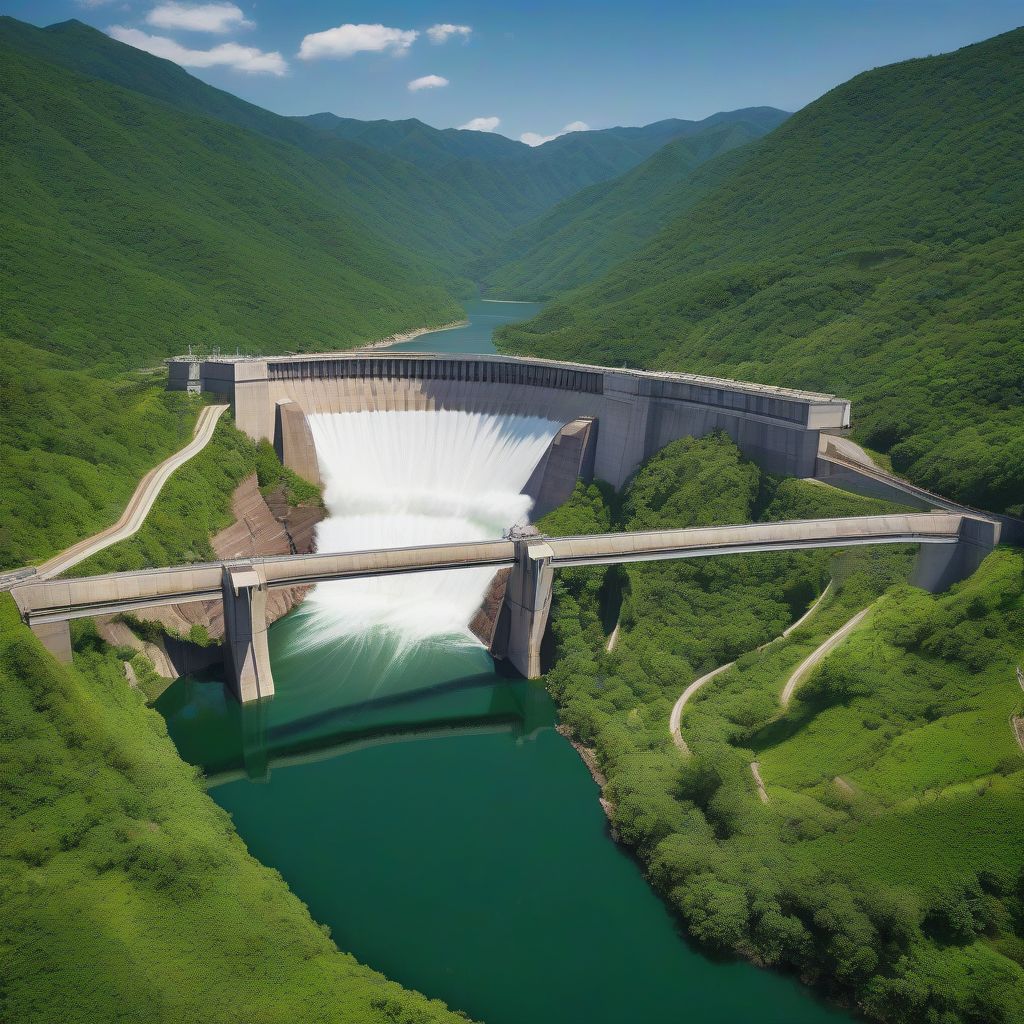Imagine a world where clean, renewable energy powers our homes, industries, and transportation, leaving behind a minimal carbon footprint. Hydropower offers a compelling vision of this future, harnessing the power of water to generate electricity without depleting our planet’s precious resources. But what exactly are the benefits of hydroelectric power for sustainable energy, and how does it contribute to a greener tomorrow? Let’s dive in.
A Clean and Renewable Energy Source
Hydropower is a clean energy source, producing no greenhouse gases or air pollutants during electricity generation. This stands in stark contrast to fossil fuels, which release harmful emissions that contribute to climate change and respiratory problems. By replacing fossil fuel-based power plants with hydroelectric dams, we can significantly reduce our carbon footprint and mitigate the impacts of climate change. As a renewable resource, water is constantly replenished through the natural water cycle, ensuring a continuous supply of energy for generations to come.
Reducing Greenhouse Gas Emissions
The most significant advantage of hydropower is its ability to drastically reduce greenhouse gas emissions. Unlike fossil fuels, hydropower produces virtually no greenhouse gases during operation. This is crucial in mitigating climate change and its associated effects.
Minimal Air Pollution
Hydropower also offers the benefit of minimal air pollution. Traditional power plants often release harmful pollutants into the atmosphere, contributing to respiratory illnesses and other health problems. Hydropower, being a clean energy source, avoids these negative impacts, contributing to cleaner air and healthier communities.
Reliable and Consistent Power Generation
Hydroelectric power plants offer a high degree of reliability and consistency in electricity generation. Unlike solar and wind power, which are dependent on weather conditions, hydropower can generate electricity 24/7, regardless of sunshine or wind speed. This consistent power supply makes it a valuable asset for grid stability and meeting baseload power demands. The ability to control water flow through dams allows for adjustable power output, making hydropower a flexible energy source that can respond to fluctuations in energy demand.
Predictable Energy Output
The consistent flow of water ensures a predictable energy output, making hydropower a reliable source for baseload power, which is the minimum amount of electricity required to meet consumer demand at all times.
Grid Stability and Reliability
Hydroelectric dams can regulate the flow of water, allowing them to respond quickly to changes in energy demand and contribute to grid stability, which is essential for maintaining a reliable electricity supply.
Cost-Effective Energy Production
While the initial construction costs of hydroelectric dams can be substantial, the long-term operational costs are relatively low. Once built, hydropower plants require minimal maintenance and fuel costs, making them a cost-effective energy source in the long run. This translates into stable electricity prices for consumers and a reduced reliance on fluctuating fuel markets.
Long-Term Cost Savings
The absence of fuel costs and relatively low maintenance requirements contribute to long-term cost savings, making hydropower an economically attractive option for sustainable energy generation.
Reduced Dependence on Fossil Fuels
By utilizing a renewable resource like water, hydropower reduces our dependence on finite and environmentally damaging fossil fuels, contributing to energy independence and security.
Economic Benefits and Job Creation
The construction and operation of hydroelectric dams create numerous job opportunities in engineering, construction, maintenance, and related industries. These projects often stimulate local economies and provide employment in rural areas. Furthermore, the reliable and affordable electricity generated by hydropower can attract businesses and industries, fostering economic growth and development.
Job Creation in Rural Communities
Hydroelectric projects often create job opportunities in rural areas, boosting local economies and providing employment in construction, operation, and maintenance.
Economic Growth and Development
The availability of reliable and affordable electricity can attract industries and businesses, fostering economic growth and development in the surrounding regions.
Environmental Considerations and Mitigation Strategies
While hydropower offers numerous benefits, it’s essential to acknowledge potential environmental impacts and implement appropriate mitigation strategies. Dam construction can alter river ecosystems, affecting fish migration and aquatic habitats. Careful planning and design, including fish ladders and flow management, are crucial to minimizing these impacts. Additionally, reservoir creation can lead to habitat loss and displacement of communities. Environmental impact assessments and community consultations are necessary to ensure responsible development and address any potential negative consequences.
Fish Passage and Habitat Protection
Implementing fish ladders and other mitigation measures can help protect fish migration patterns and maintain the health of aquatic ecosystems.
Sustainable Reservoir Management
Careful management of reservoir water levels is essential to minimize habitat disruption and address potential water quality issues.
 Hydroelectric Dam for Sustainable Energy
Hydroelectric Dam for Sustainable Energy
Conclusion
Hydroelectric power offers a compelling path toward sustainable energy, providing a clean, reliable, and cost-effective source of electricity. While it is crucial to address potential environmental impacts through responsible planning and mitigation strategies, the benefits of hydropower for a cleaner and more sustainable future are undeniable. By harnessing the power of water, we can reduce our reliance on fossil fuels, mitigate climate change, and create a brighter future for generations to come. We encourage you to share your thoughts on hydropower and its role in sustainable energy in the comments below. Let’s continue the conversation and explore how we can work together to build a greener tomorrow! Are there other aspects of hydropower that you’d like to learn more about? Let us know, and we’ll be happy to delve deeper into this fascinating topic.



